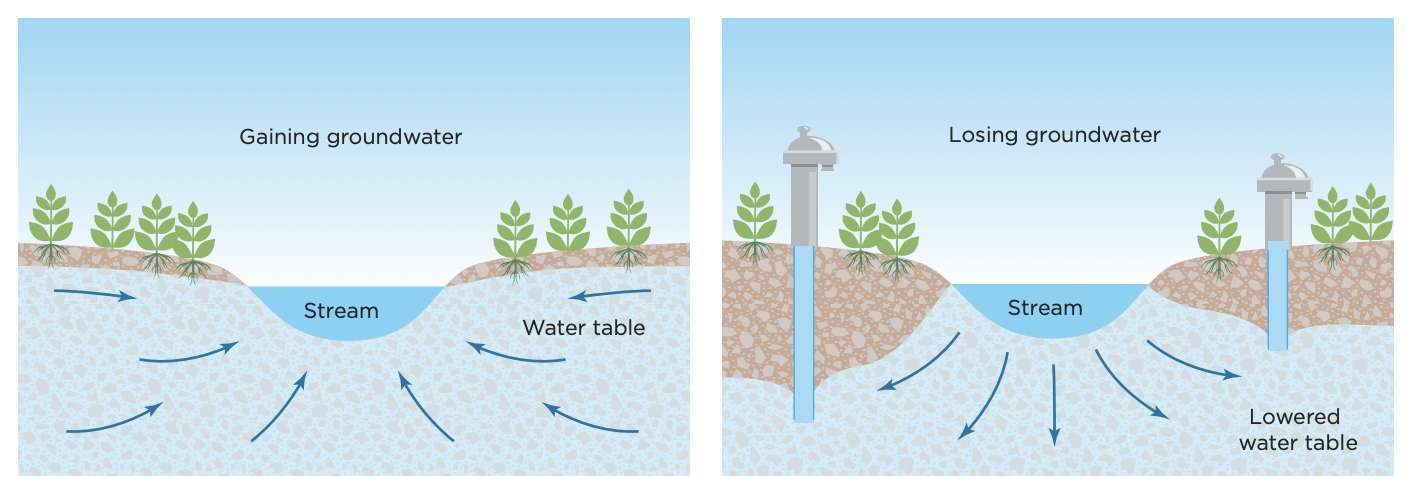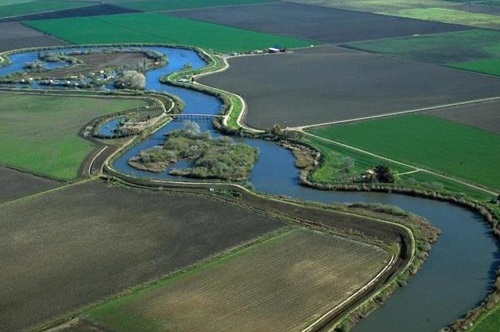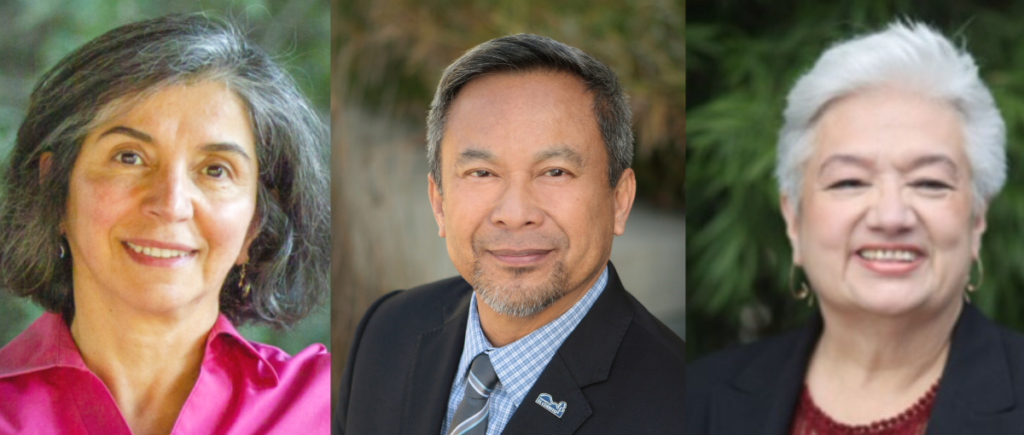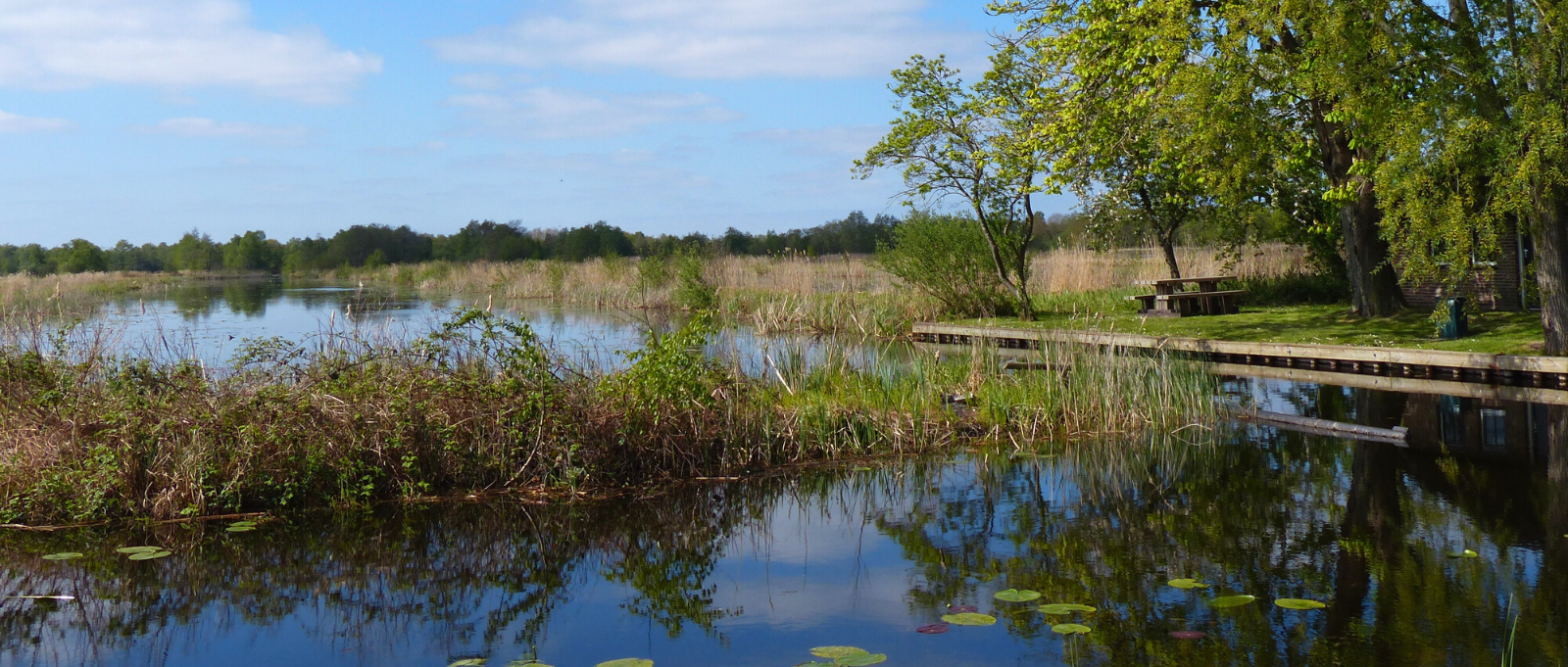May 30, 2023
Topic
Communities in Western states are facing a crisis around the continuing demand for an increasingly limited resource. California depends on groundwater for over 40 percent of its water supply—up to 60 percent in dry years. Growing impacts of climate change, including the increasingly severe drought-flood cycle, have combined with decades of over-pumping groundwater to create dire situations in communities throughout the state: domestic and shallow wells are going dry, and land is subsiding in parts of the Central Valley. In the City of Corcoran alone, land has subsided as much as 11.5 feet, causing acute flooding concerns.
Policymakers and community-based organizations have worked tirelessly to seek solutions to this seemingly intractable problem. In 2014 California passed the landmark Sustainable Groundwater Management Act (SGMA). The law was co-authored by CivicWell Policy Director Roger Dickinson, then a California State Assemblymember. SGMA directed the formation of regional Groundwater Sustainability Agencies (GSAs) that would each create plans detailing their strategies for achieving groundwater sustainability.
In March 2023 the Department of Water Resources deemed six of those plans inadequate. Now, CivicWell has joined with a host of organizations in submitting comments and recommendations to the State Water Board on its interventions into these inadequate plans.
SGMA and Groundwater Sustainability
SGMA was designed to protect California’s critical groundwater resources. As part of this legislation, the regional GSAs were tasked with developing Groundwater Sustainability Plans (GSPs) to achieve groundwater sustainability. The state did not adopt standard metrics to define groundwater sustainability, instead allowing the plans to be geared toward each GSA’s self-defined sustainability goals along with avoiding six state-defined undesirable results:
- groundwater-level declines
- land subsidence
- seawater intrusion
- groundwater-storage reductions
- interconnected surface-water depletions
- water-quality degradation






Figure 1. Chronic Lowering of Groundwater – Risk of shallow wells going dry. Also negatively impacts wetlands and streams that rely on shallow groundwater.
Figure 2. Land Subsidence – Damage to buildings and infrastructure, increased flood risk in low-lying areas, and lasting damage to groundwater aquifers.
Figure 3. Seawater Intrusion – Increased salt levels from seawater intrusion impacts drinking water and irrigation supply, and harms aquatic life.
Figure 4. Groundwater Storage Reduction – Less groundwater stored reduces the ability to be prepared for droughts and restricts future land use development.
Figure 5. Interconnected Surface-Waters Depletion – Overpumping may pull from surface waters, impacting surface water users such as fisheries, marinas, and consumers who rely on surface water for drinking.
Figure 6. Water Quality Degradation – Violation of California’s human right to water and community access to water used for drinking, cooking, and sanitation.
All graphics are from the Union of Concerned Scientists’ Getting Involved in Groundwater guide.
According to a statement from the Department of Water Resources, the six plans deemed inadequate “did not appropriately address deficiencies” in how water suppliers aimed to limit overdraft, land subsidence and impacts to drinking water wells. Further, the GSAs “did not analyze and justify continued groundwater level declines and land subsidence.”
“Since the onset of SGMA, local agencies have stepped up with dedication and progress in meeting critical milestones,” said DWR Director Karla Nemeth. “Protecting domestic wells, minimizing land subsidence and protecting groundwater resources are all State priorities. Implementation of these plans, which will require difficult adjustments as we go, will ultimately provide a safe and reliable groundwater supply for communities for generations to come.”
Leadership Counsel for Justice and Accountability policy coordinator Nataly Escobedo-Garcia shared with CalMatters that “most, if not all, of the approved and rejected plans allow groundwater levels to drop significantly before leveling off.”
As noted in a 2022 report co-authored by CivicWell, Clean Water Action, and others, this is an issue that disproportionately impacts marginalized communities and small farms. When the water table drops, larger farms have the resources to dig deeper wells. The shallow wells, those typically belonging to small farms, run dry first. And even if they don’t dry up, they sometimes become unusable due to groundwater pollution and fertilizer seepage.
The rejected plans include:
- Chowchilla Subbasin in Madera and Merced counties
- Delta-Mendota Subbasin in San Joaquin, Stanislaus, Merced, Fresno, Madera, and San Benito counties
- Kaweah Subbasin in Tulare and Kings counties
- Tule Subbasin in Tulare County
- Tulare Lake Subbasin in Kings County
- Kern Subbasin in Kern County
Comments and Recommendations on Inadequate Groundwater Sustainability Plans
Earlier this month CivicWell co-signed a letter to the State Water Control Resources Board sharing comments and recommendations regarding the Board’s intervention in the out-of-compliance GSPs. We joined a diverse and broad-based group of organizations who also co-signed the letter, including Audubon California, Clean Water Action / Clean Water Fund, Community Water Center, Leadership Counsel for Justice and Accountability, The Nature Conservancy, Self-Help Enterprises, and Union of Concerned Scientists.
Our joint comments were based on review and analysis focused on how well drinking water users, disadvantaged communities, environmental criteria such as groundwater-dependent ecosystems, stakeholder engagement and inclusion, and climate change—especially if increasing impacts of climate change were incorporated into future water budgets—were addressed in GSPs. We looked in detail at the requirements laid out in SGMA and whether they were sufficiently addressed.
We include specific recommendations for state intervention, stakeholder engagement, additional areas for improvement in the inadequate GSPs, the timeline for remedying deficiencies, and ongoing monitoring for groundwater level and groundwater quality impacts to vulnerable communities and ecosystems.
Read the Comments and Recommendations.
Groundwater Resources
For decades CivicWell has been deeply involved in groundwater issues across the state. We have resources and informative articles for local policymakers who want to prioritize groundwater conservation, resilience, and recharge in their communities. Here are a few:
- “Banking” on Nature to Replenish Our Groundwater Supplies
- What to Do About Water: Resilience, Restoration, Reliability
- Smart Water, Smart Planning: Managing California’s Groundwater
- Lessons Learned from the State’s First Groundwater Sustainability Plan
- California Growing Water Smart Guidebook (updated version coming soon!)
- SGMA and Underrepresented Farmers (report)
- Bringing Water and Land Use Together (report)
- Groundwater Exchange Webinar Series

Policy Corner
Interest in Climate Bond Legislation Grows
The growth of the projected state budget deficit for 2023-24 to at least $31.5 billion, according to the Governor’s May Revise, brought increased interest in legislation that would place bond measures on the 2024 statewide ballot. In fact, the Governor did propose that $1.1 billion for climate-related investments should be moved from the budget into a climate bond. That recommendation sharpened the focus on legislation already introduced to address climate, water and flood control, and home ownership.
Two significant bills would cover a range of climate-related programs:
AB 1567 by Assemblymember Eduardo Garcia
AB 1567 would authorize the sale of nearly $16 billion in bonds to address drinking water, wildfire preparation, drought, flood protection, extreme heat, clean energy, and other issues. The bonds would fund:
- Nearly $2.3 billion for wildfire prevention and risk reduction
- More than $1.6 billion for protection of the coast, bays, and ocean from climate impacts
- More than $5.2 billion for safe drinking water, flood protection, and drought mitigation
- $1.5 billion to protect wildlife, biodiversity, and fisheries from climate impacts
- $520 million to protect farms and working lands from climate impacts
- Nearly $1.6 billion to address extreme heat and foster resilience
- $1.2 billion for regional climate resilience projects to address multiple risks
- $2 billion for clean energy projects
SB 867 by Senator Ben Allen
SB 867 would authorize the sale of $15.5 billion in bonds to address water, drought, and flood; wildfire and forest resilience; extreme heat; nature-based climate solutions; climate smart agriculture; park creation; and clean energy, among other things. The bonds would fund:
- $5.2 billion for water, flood, and drought protection and resilience
- $3 billion for wildfire and forest resilience
- $2 billion for coastal resilience
- $500 million to address extreme heat
- $2 billion for biodiversity protection and nature-based climate solutions
- $300 million for agricultural sustainability and resilience
- $500 million for parks and outdoor access
- $2 billion for clean energy projects
Two other notable bills that would place bond measures on the ballot are also working their way through the Legislature:
SB 638 by Senator Susan Eggman
SB 638 would authorize the sale of $6 billion in bonds to address flood protection and climate resilience. The bonds would fund:
- $2.5 billion for levees, weirs, bypasses, and other facilities that are in the State Plan of Flood Control
- $500 million for projects in the Delta to increase flood protection and climate resilience
- $1 billion for multibenefit flood protection projects
- $1 billion for dam safety projects at existing dams
- $1 billion for the nonfederal share of eligible flood protection and climate resilience projects
SB 834 by Senator Anthony Portantino
SB 834 would authorize the sale of $25 billion in bonds to underwrite the “California Family Home Construction and Homeownership Program.” The bonds would fund:
- $18 billion for mortgage assistance to eligible first-time home buyers who make less than 180% of the area median income
- $7 billion for loans to eligible homebuilders for predevelopment infrastructure improvements or other upfront costs
Which, if any, of these bills will succeed in getting through the Legislature is still uncertain. Bond measures require a two-thirds majority vote of each house, and the signature of the Governor, before they can go on the ballot and a significant amount of negotiation is yet needed to settle on the ultimate approach. Even then, assuming one or more bond measures are subsequently approved by a majority of the voters in 2024, it will likely be at least 2026 before any bonds are sold and revenues available for spending on the authorized programs.
Overall, looking at the projected fiscal landscape for the state over the next several years, these bond proposals offer the best chance of delivering critical resources at the state level to take on the challenges of climate change and housing affordability and availability.
Board Highlight

CivicWell Welcomes New Board Members
We are thrilled to welcome City of Richmond Councilmember Soheila Bana, City of El Cerrito Councilmember Gabe Quinto, and City of Buena Park Mayor Pro Tem Susan Sonne to the CivicWell Board of Directors.
Soheila Bana was born in Iran, and arrived in the US in 1985 to pursue her education. She received a Regents Scholarship to attend UC Berkeley, eventually earning a PhD in Electrical Engineering and Computer Sciences. Soheila has worked in the private sector, academia, and state government, and retired from engineering in March 2021 to focus on community advocacy and supporting humanitarian agencies. Soheila is also a realtor, mostly working with first-time home buyers from the Bay Area’s immigrant population to help make home ownership a reality for this community.
Bana is passionate about community and childrens’ issues, and has a long and distinguished history of advocating for human and womens’ rights both in the Bay Area and Iran. As an independent scholar and human rights defender, she has written numerous online articles on the rights of women, children, Kurds and the Baha’is in Iran, and is currently working on her first collection of short stories in English.
Bana was sworn into office on January 10, 2023, marking the first time the Richmond City Council seated a representative from District 4. She continues to work with the West Contra Costa Fire Safe Council.
Gabe Quinto became El Cerrito‘s first Filipino-American, the second Asian-American and first LGBTQ Councilmember in the history of the city of El Cerrito. Born in Berkeley, he grew up in El Cerrito, where he attended public schools. At Cal State University, Long Beach he earned his BS in Radio, TV & Film.
Prior to his election, he served as a member of El Cerrito’s Committee on Aging and as Chair of the Human Relations Commission. For many years Gabe was an elected member of the Sierra Club Bay Chapter’s Executive and Political committees, and Chair of the West Contra Costa County Group.
Quinto began his first term on the El Cerrito City Council in December 2014. In 2021 he joined the Marin Clean Energy Executive Committee (he is currently Vice Chair). Also in 2021, Gabe became a Boardmember statewide for the League of CA Cities. He recently finished his term as President of the East Bay Division & LGBTQ Caucus, and in 2018-2019 was President of the API Caucus as well as a member of the Environmental Policy Committee.
Susan Sonne, Buena Park Mayor Pro Tem, was elected to the Buena Park City Council in December 2020. She has served as a city commissioner and former Chair of the Beautification-Environmental Commission. During her time as the Executive Director of the Buena Park Collaborative and a volunteer at the Buena Park Community Resource Center, Sonne focused on the organization’s mission of enhancing partnerships that support a safe and healthy community for all Buena Park.
Prior to public service, Susan had a 40-year career in IT, starting as a programmer and working her way into management.





